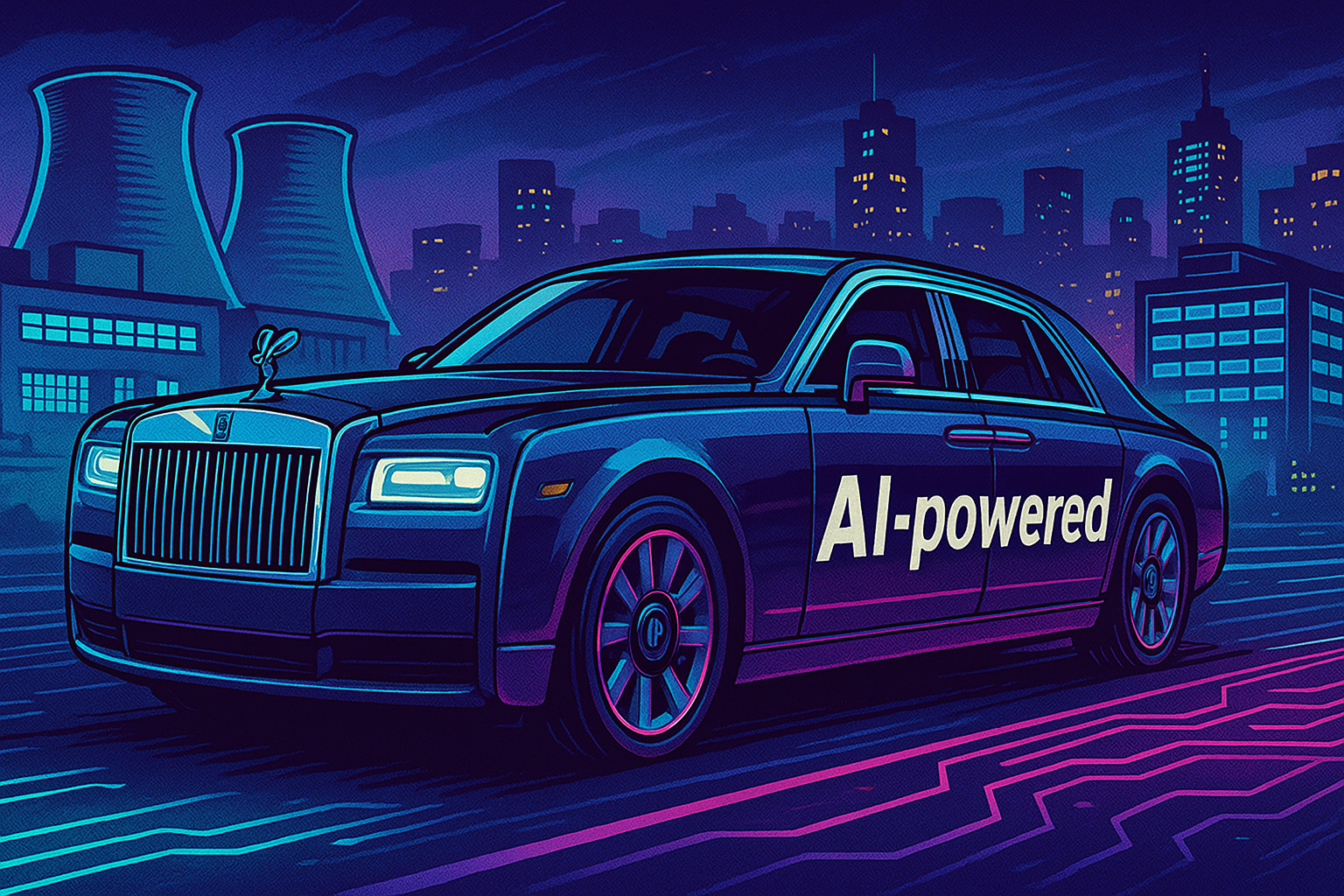In the race to power artificial intelligence, Britain’s Rolls-Royce is aiming high—very high.
A Burning Platform Ignites Transformation
When Tufan Erginbilgiç took the helm as CEO of Rolls-Royce in January 2023, the venerable engineering company was on the brink. Its civil aerospace division was recovering sluggishly from the pandemic’s hit to long-haul aviation, debt levels were uncomfortable, and profits were thinning. Erginbilgiç famously described the company as “a burning platform” and made it clear that survival would require more than modest adjustments—it demanded a complete overhaul.
His strategy was unapologetically radical: strip out inefficiencies, streamline operations, and pivot toward sectors where Rolls-Royce held unique competitive advantages. The results have been nothing short of spectacular. In just over two years, the company’s market valuation has increased tenfold, propelling it into the top tier of the FTSE 100.
But for Erginbilgiç, this isn’t simply about financial recovery—it’s about repositioning Rolls-Royce as a central player in the global energy transition and the coming AI-driven economy.
From Submarines to Small Modular Reactors
One of Rolls-Royce’s greatest untapped assets lay in its nuclear engineering expertise. For decades, the company has built compact, highly reliable reactors for the UK’s submarine fleet. These are not vast, fixed-site nuclear plants, but tightly engineered power systems designed to operate in extreme conditions, with minimal maintenance, for decades at a time.
This capability forms the foundation of Rolls-Royce’s civilian nuclear push: small modular reactors, or SMRs. SMRs are designed to be manufactured in factories and assembled on-site, dramatically reducing the construction timelines and budget overruns that have plagued large nuclear projects. Each unit is projected to produce around 470 megawatts of electricity—enough to power roughly three million homes—while fitting into a footprint far smaller than a traditional plant.
For Erginbilgiç, SMRs are not just an engineering opportunity; they’re a commercial one. He envisions Rolls-Royce as a global leader in this technology, deploying fleets of SMRs both in the UK and overseas. Agreements are already in motion for installations at home and the Czech Republic, with other nations showing interest.
The AI Energy Gap
What connects nuclear reactors to artificial intelligence? In a word: power.
The rise of generative AI, vast cloud infrastructures, and energy-hungry data centers is creating an unprecedented electricity demand. Industry forecasts suggest that AI-driven computing could consume as much energy as several large countries combined within the next decade. That electricity will need to be clean, reliable, and constant—something wind and solar, despite their progress, cannot provide on their own.
Erginbilgiç believes SMRs are uniquely positioned to fill this gap. Unlike fossil fuels, they produce zero carbon emissions at the point of generation. Unlike solar or wind, they operate 24/7, unaffected by weather or daylight. And unlike traditional large-scale nuclear, SMRs can be deployed more quickly and with lower capital risk.
He has been blunt about the company’s ambitions: “There is no private company in the world with the nuclear capability we have. If we are not the market leader globally, we did something wrong.” For him, powering AI is not a side benefit—it’s a central selling point of Rolls-Royce’s new identity.
A Trillion-Dollar Market in Sight
The company’s SMR strategy is underpinned by a bold projection: by 2050, demand could exist for as many as 400 SMRs worldwide. Rolls-Royce calculates this represents a trillion-dollar market opportunity. Such numbers are, of course, long-range estimates, but they speak to the scale of ambition inside the company.
Energy security and decarbonization are two forces driving this projected demand. Nations are looking for ways to replace coal and gas without risking blackouts, while also meeting climate commitments. SMRs, with their modularity and adaptability, offer an appealing middle ground—large enough to supply a city, small enough to integrate into mixed-generation grids.
For AI’s future, that could prove decisive. The largest AI models require vast server farms that cannot afford downtime. A dependable nuclear backbone could be what allows AI infrastructure to scale without overwhelming national grids.
From Crisis to Contender
The transformation of Rolls-Royce has also been financial. Its market capitalization now hovers around £92 billion, putting it within striking distance of surpassing AstraZeneca and Shell as the UK’s most valuable listed company. Profits have surged, debt has been brought under control, and investor confidence is riding high.
Yet Erginbilgiç has resisted calls to move the company’s primary listing to the United States—a trend among several other UK-based giants seeking higher valuations overseas. For him, keeping Rolls-Royce UK-listed is part loyalty, part strategic signaling: it’s a bet that the London market can still reward ambitious, technologically driven companies.
Risks and Realities
For all the momentum, the path ahead is not without hazards. Nuclear power, however compact, remains politically sensitive. Regulatory approvals are lengthy, public opinion can be fickle, and financing even modular reactors requires significant upfront investment. Global competition is intensifying, with players in the United States, Canada, China, and Russia all pursuing their own SMR designs.
There’s also the technological challenge of delivering SMRs at the promised cost and speed. While the submarine reactors offer proof of engineering skill, scaling up production for civilian markets—and proving commercial viability—will be a different test entirely.
And then there is the AI energy forecast itself. If efficiency improvements in AI hardware and software advance faster than expected, demand projections could soften. Conversely, if AI adoption accelerates beyond current estimates, the grid strain could intensify, making SMRs even more vital.
The Long View
In Erginbilgiç’s mind, Rolls-Royce’s journey is only beginning. The aim is not merely to participate in the global SMR market, but to dominate it. If successful, the company will help reshape the energy landscape, enabling both climate goals and the next stage of the AI revolution.
It’s a bold vision: a company that built its name on luxury cars, then jet engines, now poised to become a cornerstone of nuclear power—and perhaps, in the process, the most valuable business in Britain. Whether it achieves that depends on a confluence of technology, politics, and economics over the next two decades.
But one thing is clear: Rolls-Royce has moved from firefighting to future-building. Its bet on SMRs is not just an engineering gamble; it’s a wager on where the 21st century’s greatest growth stories will come from. And in that vision, nuclear power and artificial intelligence are not separate narratives—they are chapters in the same book.




